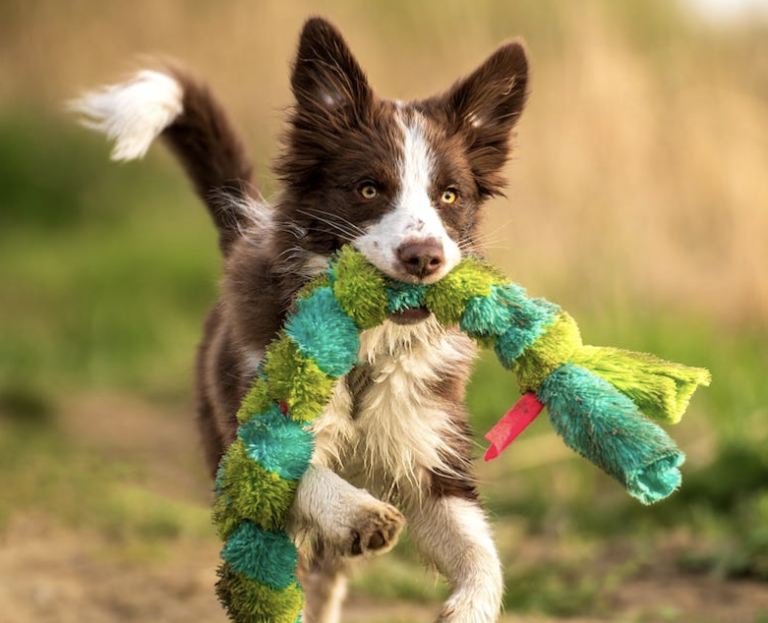Choosing the Best Dog Training Method for Your Canine Companion
This article explores the different types of dog training methods, including positive reinforcement, alpha dog (dominance) method, relationship-based training, electronic training methods, and model/rival training approach, and discusses their effectiveness in shaping a dogs behavior and building a strong bond between the dog and owner.
Introduction to Dog Training Methods
Choosing the right dog training method is essential for successful puppy training outcomes. The method selected should be tailored to the dog’s temperament, behavior issues, and the owner’s training objectives. Understanding the various dog training methods available and their effectiveness is key to achieving positive results in training. Each dog is unique, so it’s crucial to find the right approach that resonates with the individual dog.
When considering different training methods, Positive Reinforcement Training stands out as a widely favored and effective approach. This method involves rewarding desirable behaviors with treats or praise, encouraging the dog to repeat those behaviors. For instance, when teaching a dog to sit, using positive reinforcement by providing a treat every time the dog sits on command can reinforce this desired behavior. Positive reinforcement not only shapes a dog’s behavior but also strengthens the bond between the dog and the owner through positive interactions.
Another notable training method is the Alpha Dog (Dominance) Method, which emphasizes the concept of pack hierarchy and the owner as the alpha or leader. While this method has been debated for its effectiveness and potential negative impact on dogs, different approaches to dog training techniques have been developed over the years to cater to various learning styles. understanding its principles can shed light on traditional training ideologies. For example, in a pack setting, the dominant alpha dog would assert its leadership by controlling resources and leading the pack. This method’s application in modern training may vary, but it offers insights into historical perspectives on dog training practices.
What are the different types of dog training methods available?
Dog training encompasses a variety of methods, each with its own principles and techniques, catering to different learning styles and training goals. Positive reinforcement training stands out as a popular approach that focuses on rewarding desirable behaviors with treats or praise. For example, when teaching a dog to sit, positive reinforcement involves giving a treat every time the dog successfully follows the command, reinforcing the behavior positively.
In addition to positive reinforcement, there are dominance-based methods that concentrate on hierarchy and the owner’s role as the authority figure within the pack. For instance, the Alpha Dog Method emphasizes the concept of the owner being the alpha, requiring the dog to recognize and submit to their leadership. This method often involves using commands to assert authority, such as asking the dog to wait before meals to establish the owner’s dominance. Each method offers a unique approach to dog training, and understanding these differences can help owners choose the most suitable technique for their furry companions. To explore these methods further and discover which one aligns best with your dog’s personality and training needs, consider visiting the Off Leash K9 Training of Charlottesville website at charlottesvilledogtraining.com.
Positive Reinforcement Training
Positive reinforcement training is a highly regarded and successful method used in dog training. This approach involves rewarding desirable behaviors with treats, toys, or verbal praise, providing a positive experience for the dog. For instance, when teaching a dog to sit, giving them a treat immediately after they sit reinforces the behavior and increases the likelihood of them sitting on command in the future. By utilizing positive reinforcement, dogs learn to associate good behavior with rewards, leading to the repetition of those behaviors.
One notable aspect of positive reinforcement training is clicker training, which has gained popularity among trainers. Clicker training involves using a small device that emits a clicking sound to signal to the dog the exact moment they perform the desired behavior. This precise marking helps dogs understand which behaviors earn them rewards, leading to faster learning and improved communication between the trainer and the dog. Through consistent and positive interactions, dogs not only learn new commands but also develop a trusting and cooperative relationship with their owners, enhancing the training experience and strengthening the bond between them.
Alpha Dog (Dominance) Method
The Alpha Dog Method, rooted in traditional concepts of dominance and pack hierarchy, emphasizes the owner’s role as the alpha or leader, with the dog expected to submit to authority. This method was inspired by wolf pack behavior, where the alpha wolf is the leader of the pack, and other members follow its lead. For instance, in the wild, the alpha wolf decides where the pack goes, when to hunt, and enforces discipline within the group. While this method was once popular, critics argue that dominance-based training can lead to fear, anxiety, and even aggression in dogs if not applied correctly.
In contrast to the Alpha Dog Method, modern training approaches focus more on positive reinforcement and relationship-building. Positive reinforcement methods involve rewarding desired behaviors to encourage their repetition. For example, when a dog sits on command and is rewarded with a treat, it associates sitting with a positive outcome, reinforcing the behavior. Relationship-based training, on the other hand, emphasizes building a strong bond between the dog and owner through trust and communication. By understanding the dog’s needs and behaviors, owners can address training challenges effectively and create a harmonious partnership with their canine companions. This shift towards positive and relationship-centered training promotes a cooperative and respectful bond between dogs and their owners, leading to happier, well-adjusted pets.
Relationship-Based Training
Relationship-based training is a holistic approach that emphasizes building a strong emotional bond between the dog and its owner through trust, communication, and mutual understanding. Unlike traditional training methods that rely solely on commands and corrections, this method delves into the emotional and psychological aspects of the human-canine relationship. For example, instead of simply teaching a dog to sit on command, relationship-based training focuses on why the dog may be exhibiting certain behaviors and addresses the underlying emotions driving those actions.
Furthermore, relationship-based training encourages owners to view their dogs as individuals with unique personalities and needs. By recognizing and respecting these differences, owners can tailor their training methods to suit their dog’s specific requirements, ultimately leading to more effective and compassionate training experiences. This personalized approach fosters a deep level of trust and cooperation between the dog and owner, creating a solid foundation for successful training outcomes. Through open communication, patience, and empathy, relationship-based training not only shapes a dog’s behavior but also strengthens the emotional connection between the dog and its owner.
Electronic Training Methods
Electronic training methods encompass a range of tools, including shock collars, that are utilized to address undesired behaviors in dogs. For instance, a shock collar may be employed to discourage excessive barking or to deter a dog from approaching certain areas in the home. Despite their potential effectiveness in specific scenarios, these methods come with a caveat. When electronic training tools are misused or applied improperly, they can lead to adverse consequences such as heightened stress, fear, and even physical harm to the dog. Therefore, it is imperative for dog trainers to approach the use of electronic training devices with caution and prioritize the well-being and safety of the canine companion throughout the training process.
To mitigate the risks associated with electronic training methods, seeking guidance from professional trainers is highly recommended. Trainers with expertise in utilizing electronic tools can provide valuable insights into their safe and appropriate application. Moreover, these professionals can offer tailored advice on how to integrate electronic training techniques effectively within a comprehensive training program while ensuring the dog’s welfare remains a top priority. By following expert guidance and best practices, dog owners can harness the potential benefits of electronic training methods while safeguarding their furry friend from any potential harm.
Model/Rival Training Approach
Model/Rival training is based on the concept of dogs learning through observation and competition for resources within a training group. By leveraging social learning and imitation, this approach allows dogs to learn new behaviors and skills by watching and imitating others in the training environment. This method can be particularly beneficial for dogs that thrive on social interaction and learn best through observation and competition.
Conclusion on Dog Training Methods
In conclusion, the effectiveness of a dog training method can vary based on the dog’s personality, learning style, and training needs. Dog owners should research and understand the different training methods available to choose the most suitable approach for their canine companion. For personalized and effective dog training solutions, exploring reputable training programs like Off Leash K9 Training of Charlottesville can provide comprehensive training programs tailored to meet individual training needs and promote a harmonious relationship between dogs and their owners. Visit Off Leash K9 Training of Charlottesville for more information on their proven training techniques and services.












